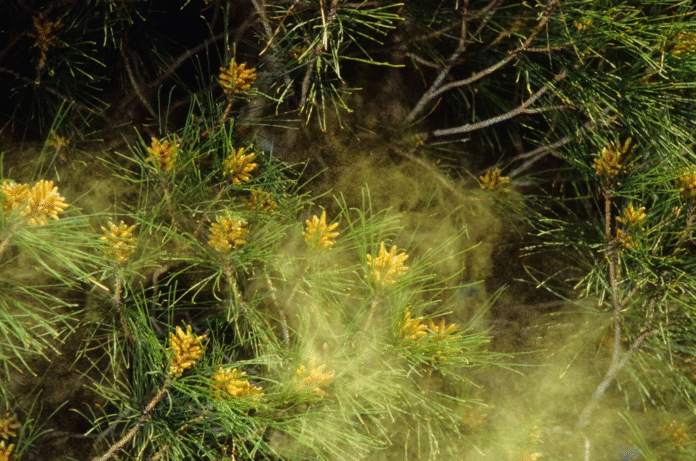
For millions of allergy sufferers, the arrival of spring is both a welcome and dreaded event. As the weather warms, trees begin to bloom, grasses turn green, and flowers start to bloom—each of which produces the pollen that makes life miserable for so many. But what if the allergies we struggle with every year are not just an inevitable part of nature, but a consequence of the world we’ve created?
Seasonal allergies are the result of an overactive immune system that misidentifies harmless substances—like pollen—as threats. For most people, this means sneezing, itchy eyes, and congestion, easily managed with medication. However, for some, the reaction can be much more severe, leading to asthma attacks, wheezing, chest tightness, and shortness of breath. In rare cases, allergens can trigger anaphylaxis, a life-threatening condition where the body goes into shock.
While the majority of pollen allergies are more of an inconvenience than a danger, the prevalence and intensity of these symptoms are on the rise. The problem is that pollen is everywhere—impossible to escape, no matter how hard you try. It sneaks in through vents, window seals, on your clothing, and even in the fur of your pets. And, with climate change playing a central role, that once-manageable annoyance is rapidly becoming a year-round battle.
The Pollen Problem: An Invisible Menace
Pollen grains, though tiny, are a major irritant. Ranging from about 100 microns to less than 10 microns in size, they can slip deep into the lungs and trigger all sorts of reactions. For many, the symptoms are mild, but the persistent exposure can cause significant discomfort, even for those with only mild sensitivities. The pollen seasons for different plants—trees in spring, grasses in summer, and ragweed in the fall—are the standard markers for allergy sufferers. But these natural rhythms are no longer as predictable as they once were.
Climate change, driven largely by human activity, has caused major shifts in these traditional pollen patterns. Tree pollen is now being released earlier in the spring, with some species even starting their season weeks before they did decades ago. Grass pollen, too, is showing up later than usual, while its season has stretched into the summer, overlapping with the onset of ragweed pollen, which has also extended by weeks in some areas. These overlapping pollen seasons are becoming a major issue for allergy sufferers, as they’re faced with nearly continuous exposure to allergens.
The Climate Connection: How Our Actions Fuel the Allergy Crisis
At the heart of the growing allergy problem is humanity’s reliance on fossil fuels. Burning coal, oil, and natural gas releases carbon dioxide (CO2) into the atmosphere. This increase in CO2 is having two major effects on the environment: it directly encourages plant species to produce more pollen and contributes to the warming of the planet.
When plants absorb CO2, it acts as a natural fertilizer. As a result, they grow faster and larger, producing more flowers and, in turn, more pollen. More pollen means more seeds, and the cycle continues, with each year seeing an increase in the amount of pollen released into the air. The feedback loop is self-perpetuating—more CO2 leads to more pollen, and more pollen leads to more allergens for us to contend with.
Beyond that, higher CO2 levels are also contributing to the broader impacts of climate change, including rising temperatures and shifting seasons. Warmer temperatures lead to longer growing seasons, allowing plants to produce pollen for extended periods. In short, the plants are blooming earlier, staying active longer, and releasing more allergens during those extended seasons. And this is not just a local issue—many parts of the U.S., including Texas, are on track to see pollen counts nearly double by 2050 compared to levels seen in 2000.
The Consequences of a Warming Planet
As the warming planet lengthens the pollen seasons and increases the volume of allergens, the impact on public health is significant. Already, allergies are a major cause of missed school days, lost productivity, and healthcare costs. The economic burden is immense, with billions of dollars spent annually on allergy treatments, doctor’s visits, and medications. Moreover, the broader societal costs of lost workdays and reduced productivity add to the overall strain.
For those with more severe reactions, the consequences can be even worse. According to recent studies, tree pollen alone leads to tens of thousands of emergency room visits annually. Many of these visits involve children, who are more vulnerable to severe allergic reactions and respiratory problems.
And it’s not just about the direct health impacts. With rising pollen counts, more people—many of them previously unaffected—are discovering that they are allergic to pollen for the first time. As the allergy burden becomes heavier, even those with mild sensitivities may find their symptoms harder to manage.
A Future Full of Pollen
Looking ahead, the outlook for allergy sufferers is grim. The trends suggest that pollen seasons will only grow longer, and the concentration of allergens will continue to increase. Climate scientists predict that, unless drastic measures are taken to curb greenhouse gas emissions, this problem will only worsen. For allergy sufferers, this means that the relief of winter will become shorter, and the misery of pollen season will become more prolonged.
What can we do to mitigate the growing allergy crisis? The most effective solution lies in addressing the root cause: climate change. Reducing our reliance on fossil fuels, transitioning to renewable energy, and enacting stronger environmental policies can slow the rise in CO2 levels and limit the extent of the changes in pollen patterns.
While individual actions, like staying indoors during peak pollen times or using air purifiers, can offer temporary relief, they are not enough to solve the broader issue. Without a concerted effort to tackle the climate crisis, it seems likely that seasonal allergies will continue to worsen, impacting millions of people across the globe.
In the end, the rising allergy burden is a clear reminder of how human actions are not just changing the climate, but also affecting our daily lives in ways we may never have anticipated. As we continue to grapple with the health impacts of a warming world, we may have to confront the reality that our actions are making it harder—literally—to breathe.


